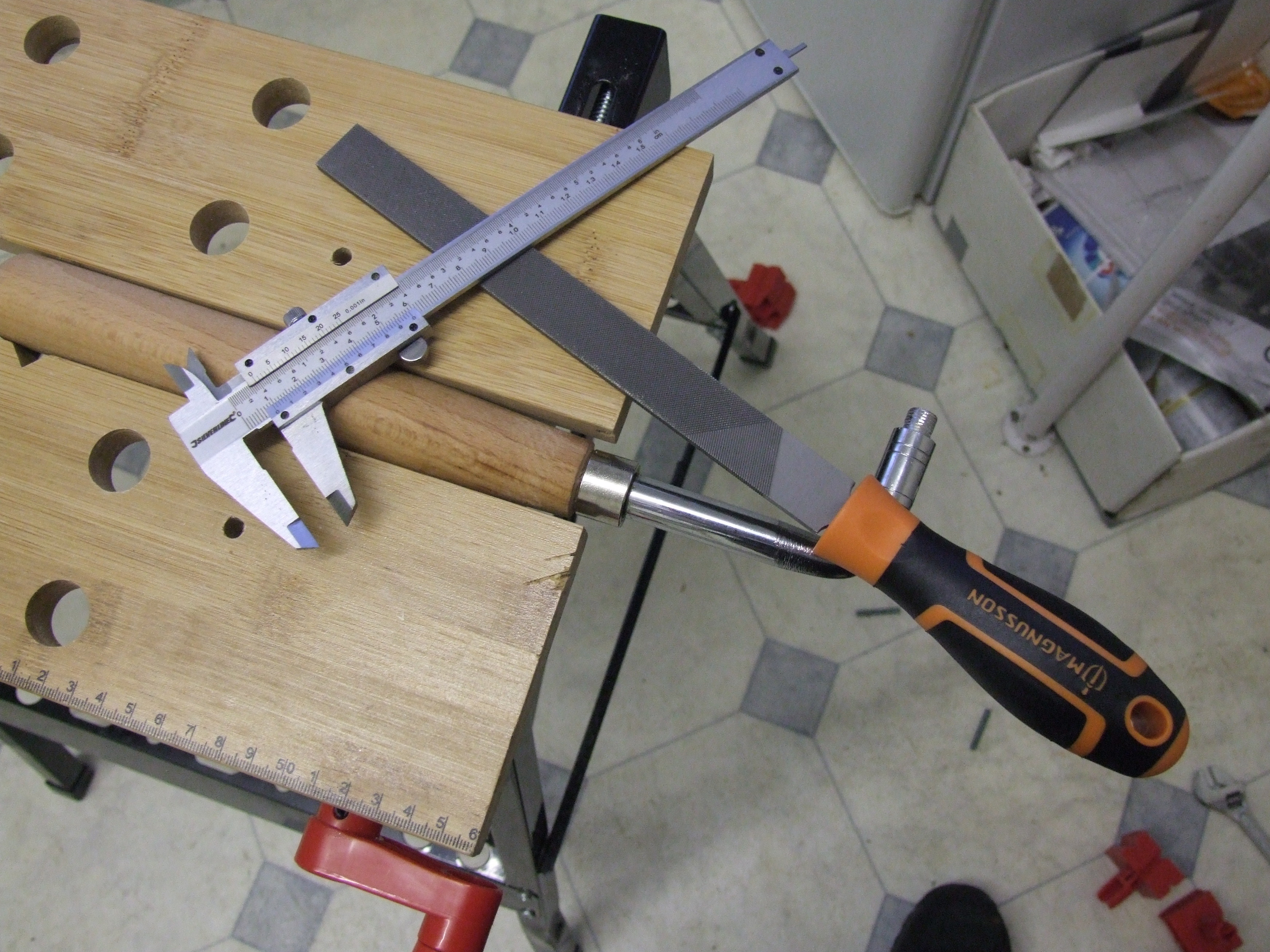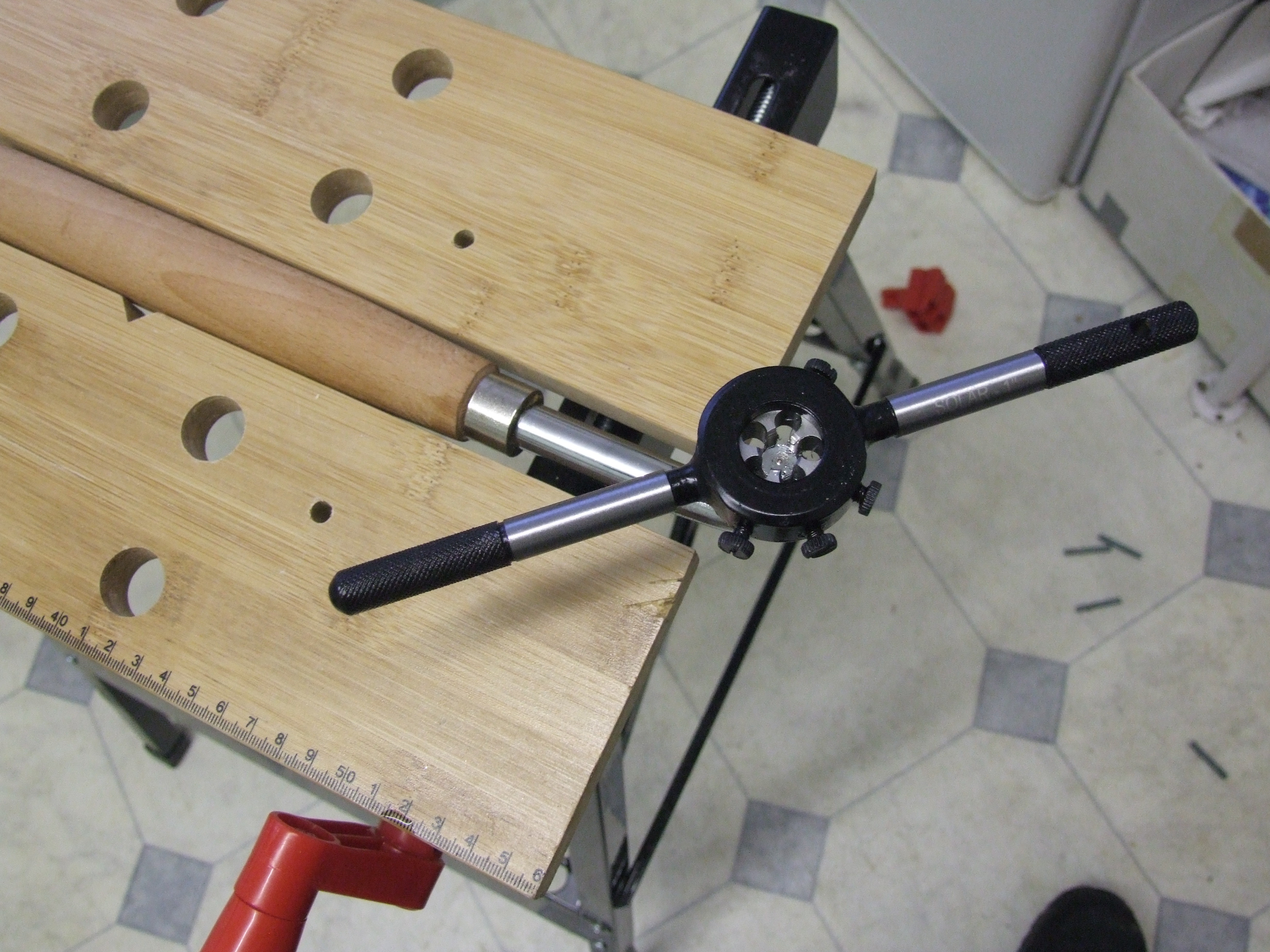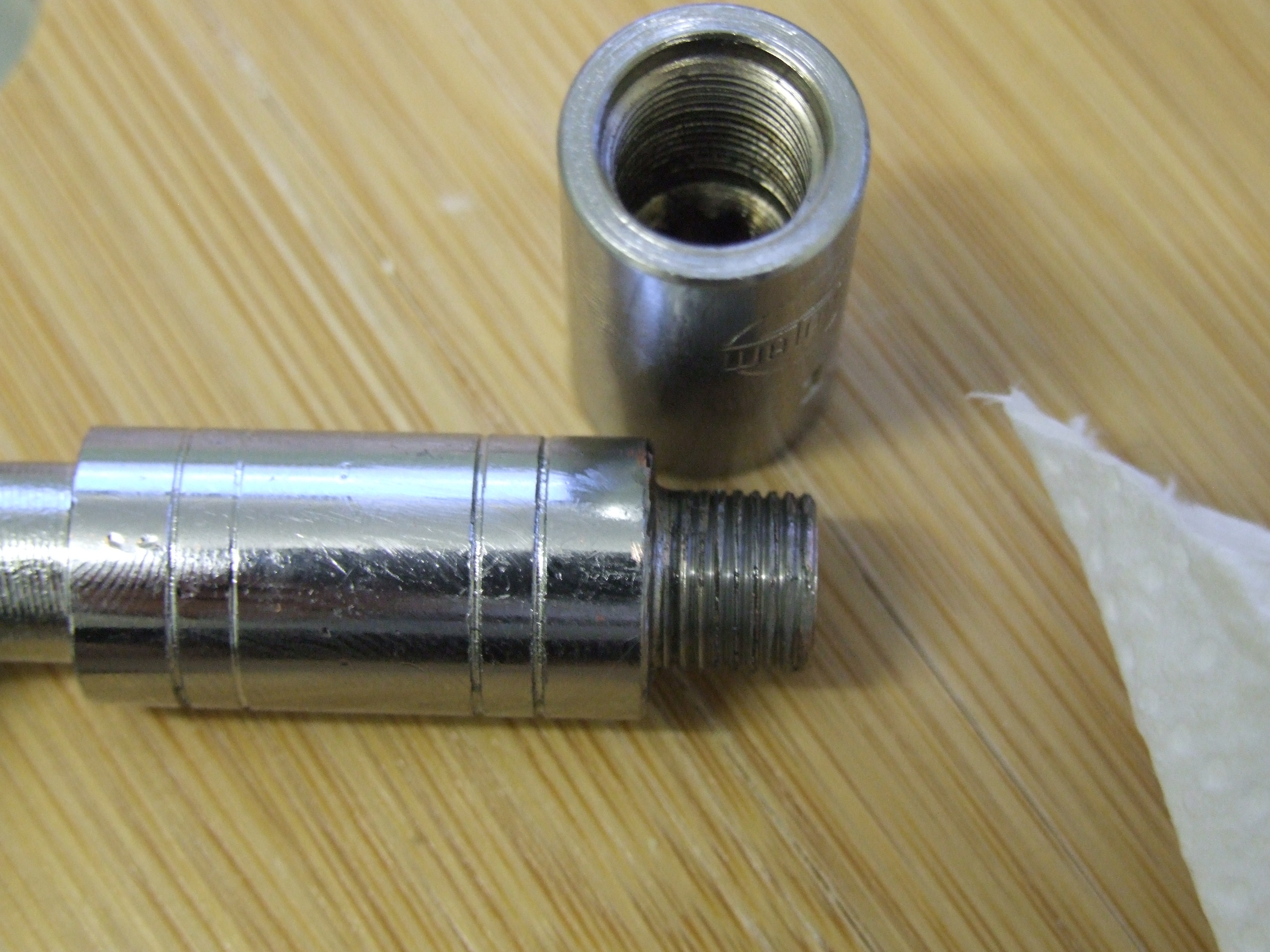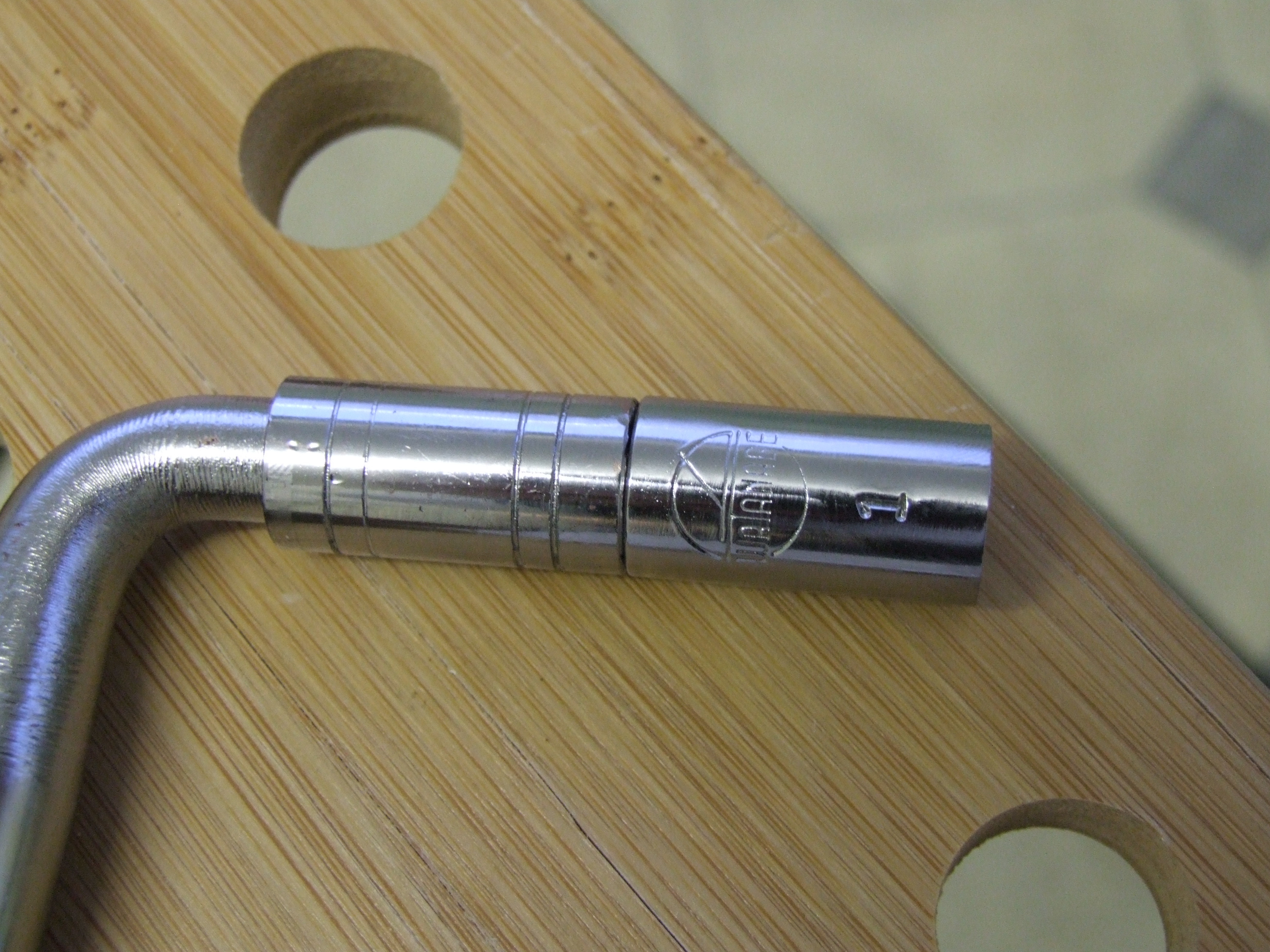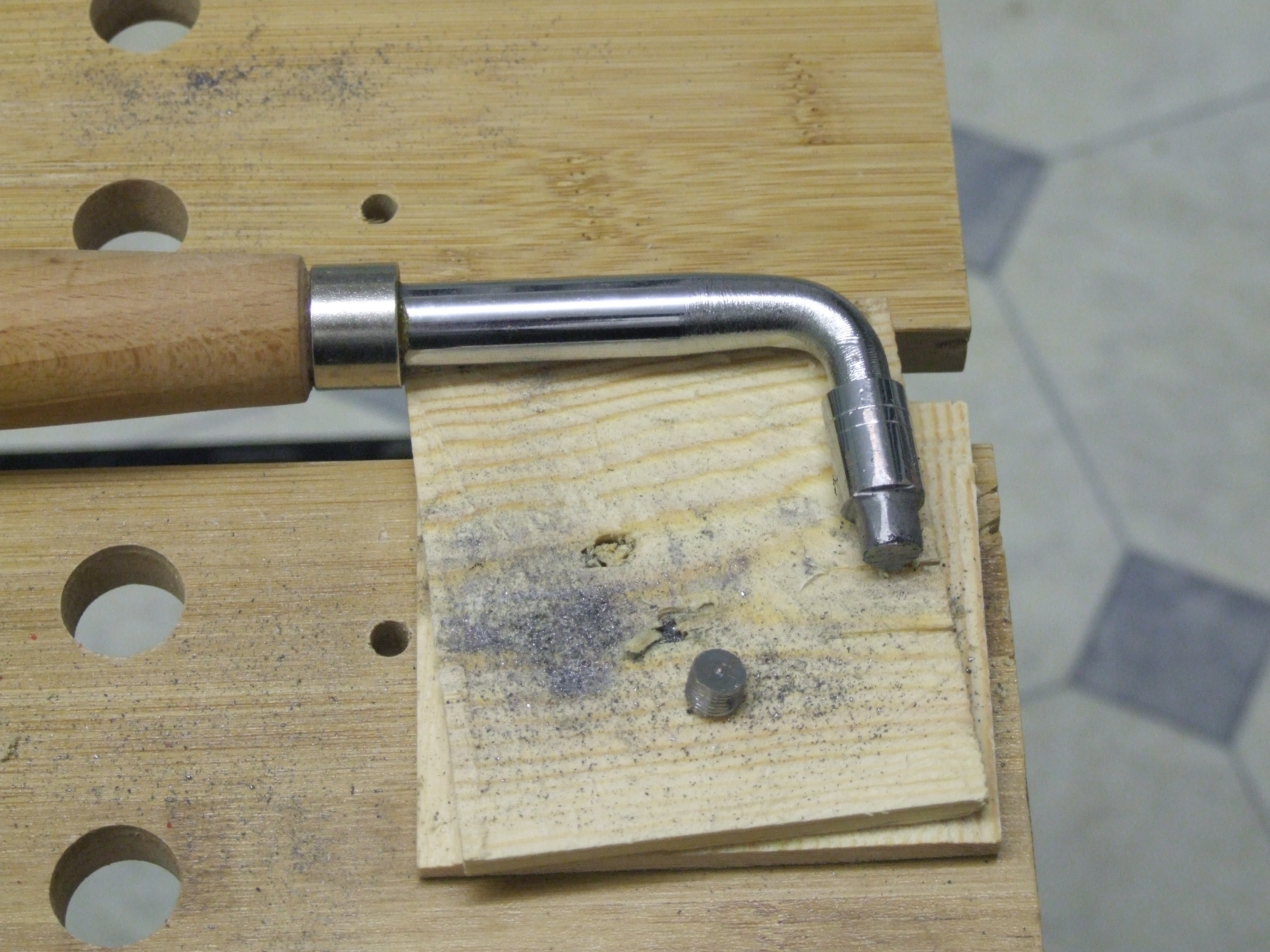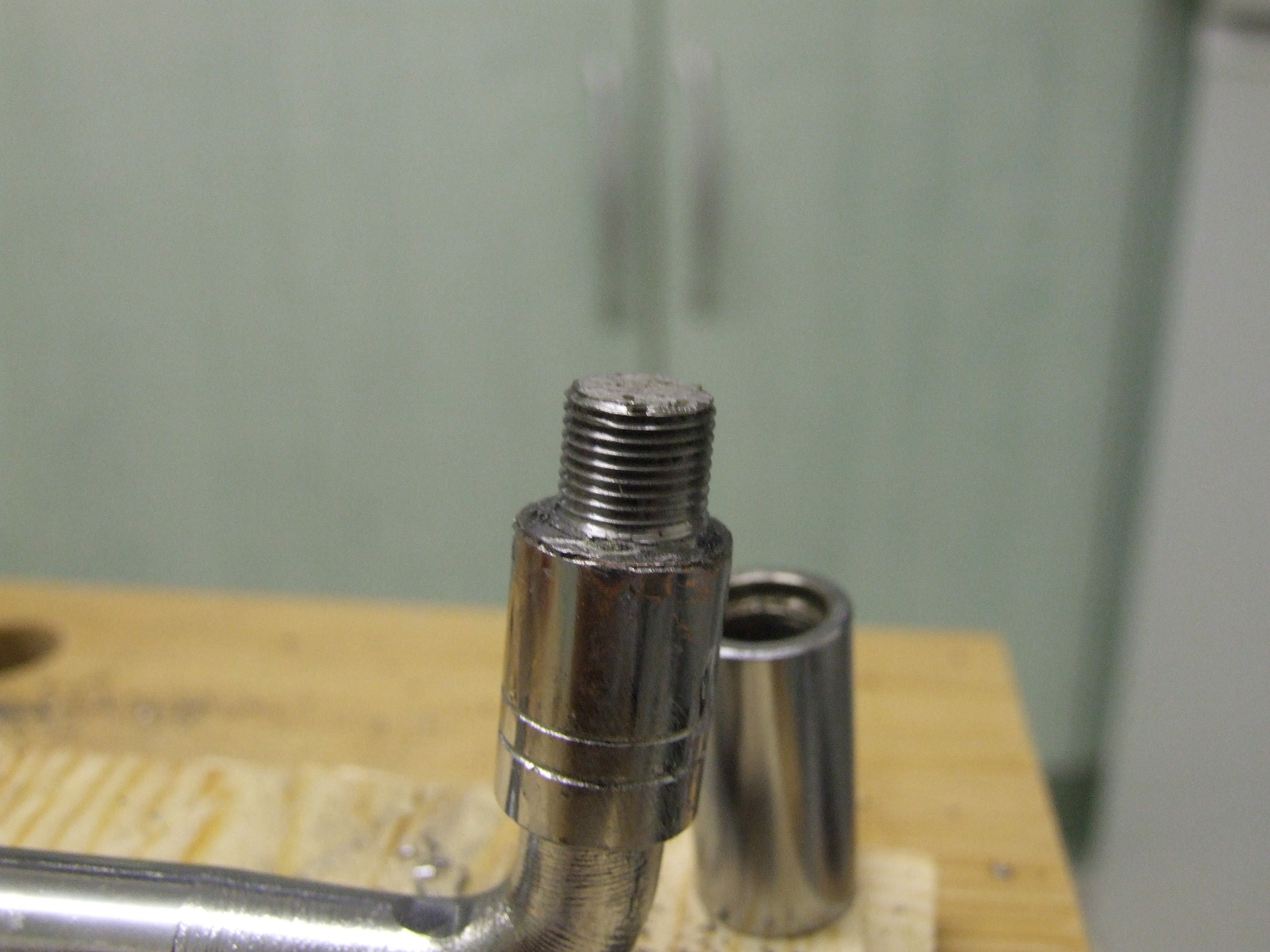I have a piano to tune. And also to restore: a few hammer shafts to bend, hammers to file, a bit of crud to clean out, bridle straps to replace, etc, etc. The piano cost £40 from Ebay and is in remarkably good nick, and any piano is better than none! But an out of tune piano is no good.
Now students, I feel, should not really spend money having their pianos tuned—at least, not students of Theology.1 But who is to say I cannot tune it myself? So I read a few books (I am doing an arts degree after all!) and websites, and it seems a moderately competent person with a tuning meter can expect to do a reasonable job in a day—the kind of job a tuner would do in half an hour. I’ll settle for that: it’ll make things infintely more playable, and I can’t start work regulating an out-of-tune piano. It’s just too painful on the ear.
Now, to tune a piano you need a tuning lever. And unlike harps, or harpsichords, you need a long lever—those strings are under enormous tension, and tuning with a harpsichord tuning key is just not going to work (I tried). Unfortunately, piano tools are woefully expensive, because there aren’t enough piano tuners and rebuilders in the world. At this point temptation came into play, and I bought a cheap chinese ‘piano tuning kit’ off ebay, assuming that rubber wedges (to mute the strings) are just wedges, and surely piano tuning pin sizes are standardised?
Of course they are! Internally. Every manufacturer seems to have used their own size, and even today there are apparently competing sizes… and of course, my cheapo lever just spun on the pins. I tried to make a sheet metal insert to decrease the size of the tip: a foolish idea which of course did not work. Then I spent many fruitless hours trying to think of a way to make a new tip for it with only hand tools in a kitchen, and came up with nothing. Theoretically one could drill out a piece of mild steel, file it, polish it smooth, and then harden it. But really, I’ve got a degree to do. So I bought the bullet and bought an expensive but very well made tuning lever tip in the same size from Heckscher: in fairness to the company, they’re no cheaper anywhere else, there just isn’t the market to make them cheaper.
Now, it would be nice if it just screwed into the M10/1 (fine, 1mm pitch) thread on the chinese lever. But of course it didn’t. So I had several options: glue or weld it in place, buy the right lever, or find something with the right thread. The first two options would cost about the same (I don’t have a welding machine!), so the third was preferrable. After an enormous amount of head scratching and purchasing a thread gauge I discovered it was a 3/8" 30TPI ‘UNS’—american 60° metric-style threads but with imperial dimensions. And looking at the end of the lever, there might just be enough metal under the thread to file it off and cut another. A die was sourced at very reasonable price from Tracy Tools and I filed off the end:
cut a new thread:
and screwed on the tip:
It was a bit loose, but tightened up. Of course, on the tuning pegs it just came straight off again, and eventually stripped the very mild steel lever. So back to the workbench, this time to try the silly project of filing a new 3/8" rod from the end. After cutting off the old thread, here it is:
And of course, the die (with plenty of washing up liquid as a threadcutting lubricant, and going slowly!) does a pretty good job of rounding up the metal as it cuts:
Now that’s a lovely thread. The only thing I managed productively that day—there are days like that—but a nice thread. The new shoulder isn’t quite flat, but the tip tightened down and stuck on after a little work, and I pulled the five or so notes which sounded out of tune with themselves back into unisons. 2
If anyone else is in need of such a tool in similar straits: don’t buy a chinese lever, buy a tuning tip and a 3/8" 30TPI die, and then make your own lever—and while you’re at it, make it longer than this one. Unless you’re lucky enough to have a screwcutting lathe and can just make an adaptor…
